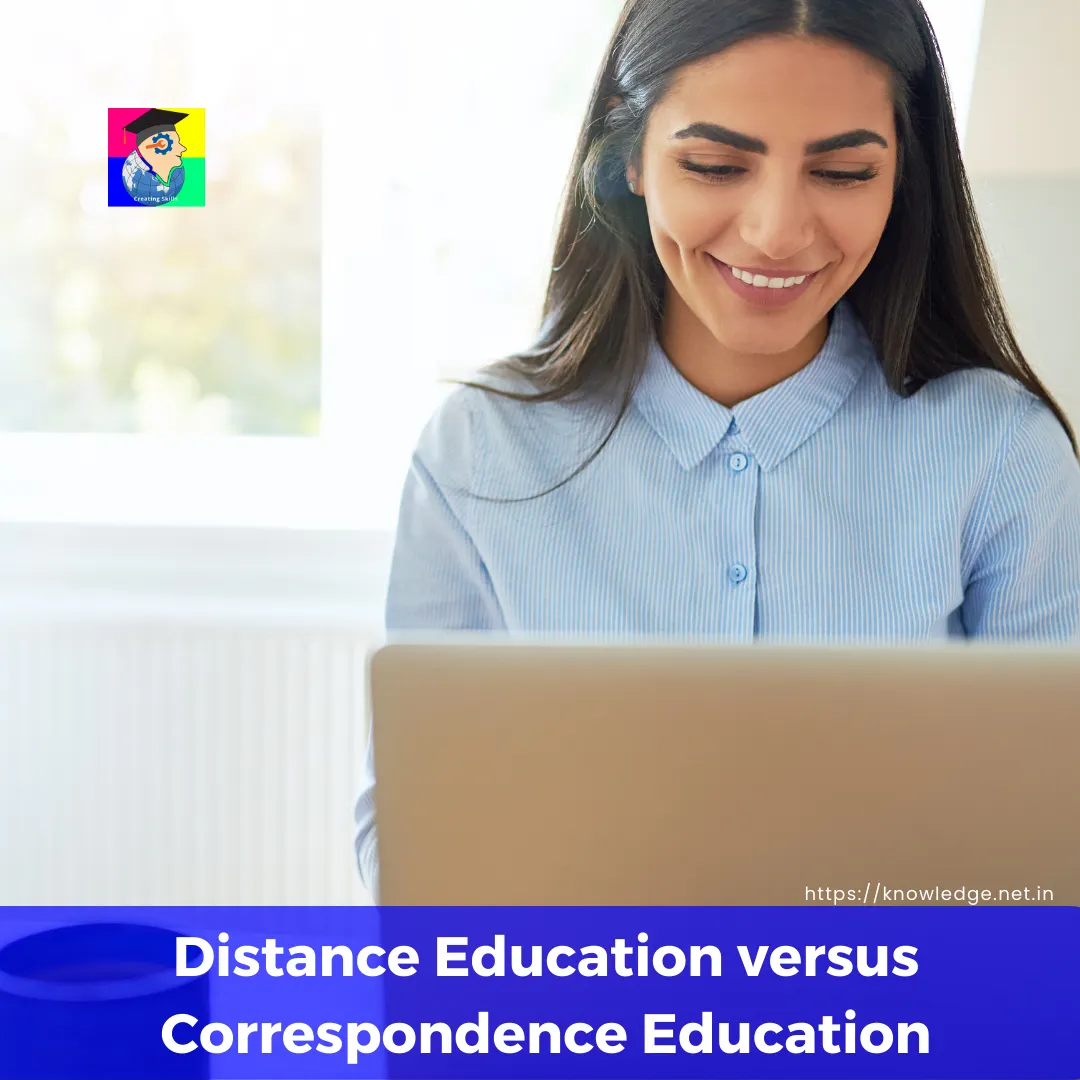Distance Education versus Correspondence Education

Education is a powerful tool that empowers individuals and transforms societies. In India, where access to education has historically been a challenge, distance education and correspondence courses have played a significant role in bridging the gap. However, with the advent of technological advancements, the traditional correspondence mode of education is being gradually replaced by the more dynamic and interactive distance education system. This blog delves into the nuances of distance education and correspondence in India, highlighting their differences and the future of remote learning.
Understanding Distance Education: Distance education, also known as online education or e-learning, is a mode of education that enables learners to pursue their studies remotely. It leverages various digital tools, platforms, and multimedia resources to deliver content and facilitate interactive learning experiences. Distance education programs in India are typically offered by universities, open universities, and dedicated online education platforms.
Interactive Learning & Technological Advancements of Distance Education: Contrary to popular belief, distance education is not limited to self-study. Online courses often incorporate interactive elements such as virtual classrooms, discussion forums, and collaborative projects, fostering peer-to-peer and student-teacher engagement. Distance education harnesses the power of technology, providing learners with a wide range of multimedia resources, simulations, and real-time assessments. This facilitates a richer and more engaging learning experience, enhancing understanding and knowledge retention.
Understanding Correspondence Education: Correspondence education, also known as the traditional postal or mail-based education, has been a long-standing method of distance learning in India. In this system, course materials are sent by post, and students complete assignments and examinations through correspondence with the educational institution.
No Internet Dependency: Correspondence education does not rely on an internet connection, making it a viable option for individuals in areas with limited or unreliable internet access. It ensures that education remains accessible to all, irrespective of technological constraints.
Supportive Materials: Correspondence courses typically provide comprehensive study materials, including textbooks, guides, and supplementary materials. These resources help students learn independently and serve as a valuable reference even after the course is completed.
The Changing Landscape and Future Outlook: With the rapid advancements in technology and the growing popularity of internet access, distance education is witnessing a shift in preference over traditional correspondence education in India. While correspondence courses still hold relevance in specific scenarios, the benefits offered by distance education have propelled its widespread adoption. Online learning platforms, Massive Open Online Courses (MOOCs), and virtual classrooms are revolutionizing the way education is delivered and consumed.
The future of distance education in India holds immense potential for growth and innovation. As technology continues to evolve, augmented reality (AR), virtual reality (VR), and artificial intelligence (AI) are expected to play pivotal roles in
enhancing the effectiveness and interactivity of online education. Additionally, the integration of industry-relevant skills, personalized learning paths, and adaptive assessments will further enrich the distance education experience.
Distance education has emerged as a powerful alternative to traditional correspondence education in India. It offers increased accessibility, flexibility, and interactivity, empowering learners to overcome barriers and pursue education on their terms. While correspondence education still holds value in certain contexts, the advent of technology and the changing educational landscape have paved the way for the widespread adoption of distance education. As India continues to prioritize inclusive and quality education, embracing the potential of distance education will be key to bridging the educational divide and fostering a knowledgeable and empowered society.
Distance Education versus Correspondence Education: Embracing the future of learning or holding onto the past? Share your thoughts below👇!
